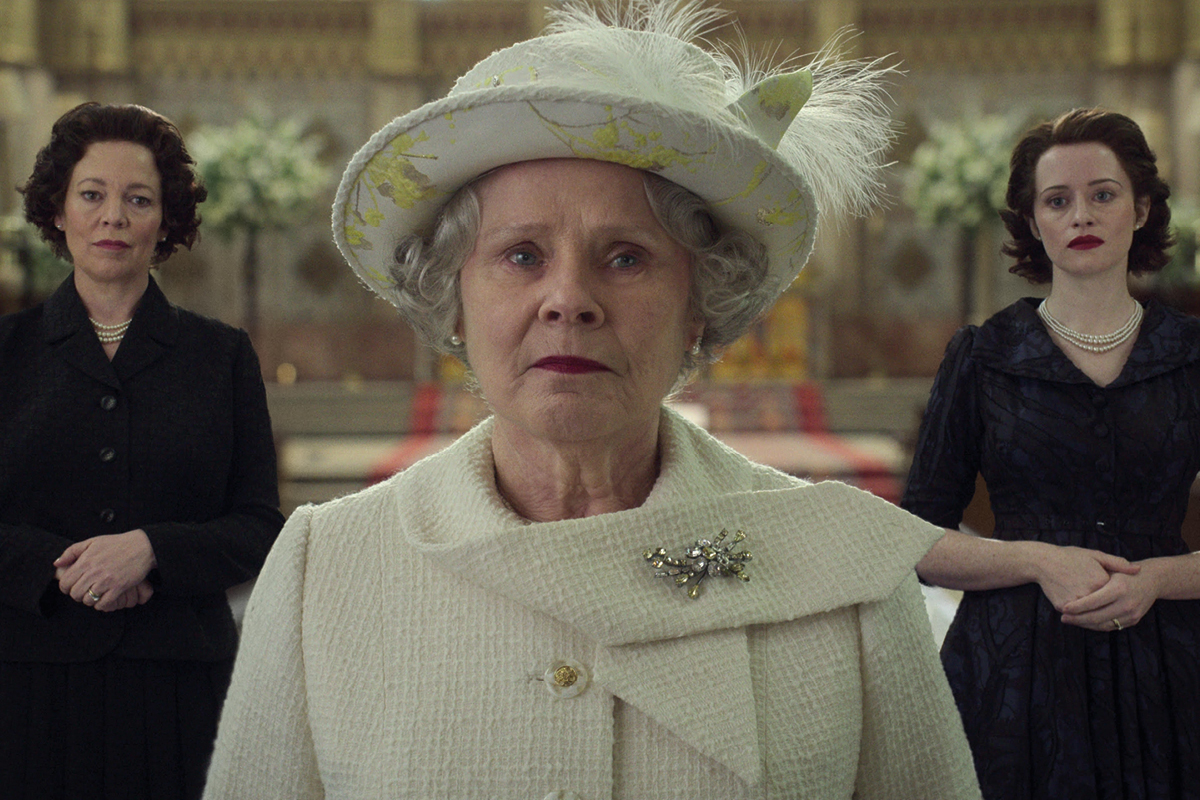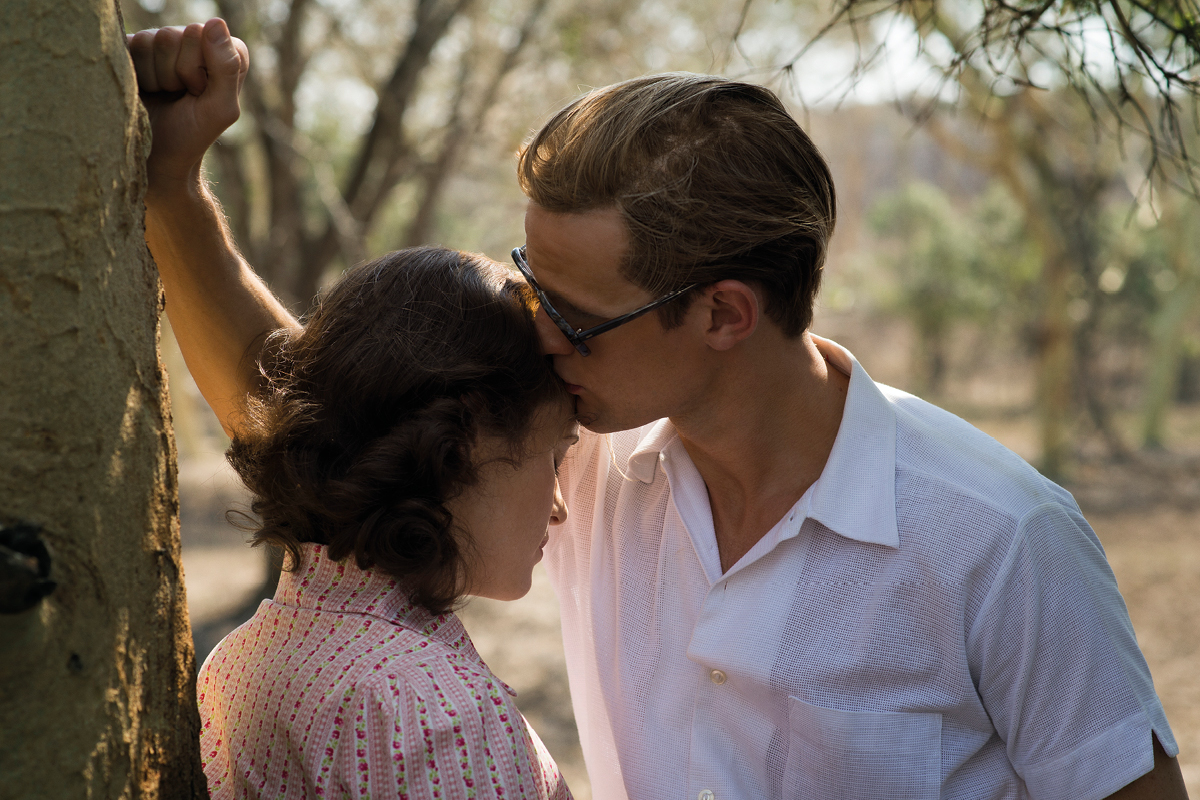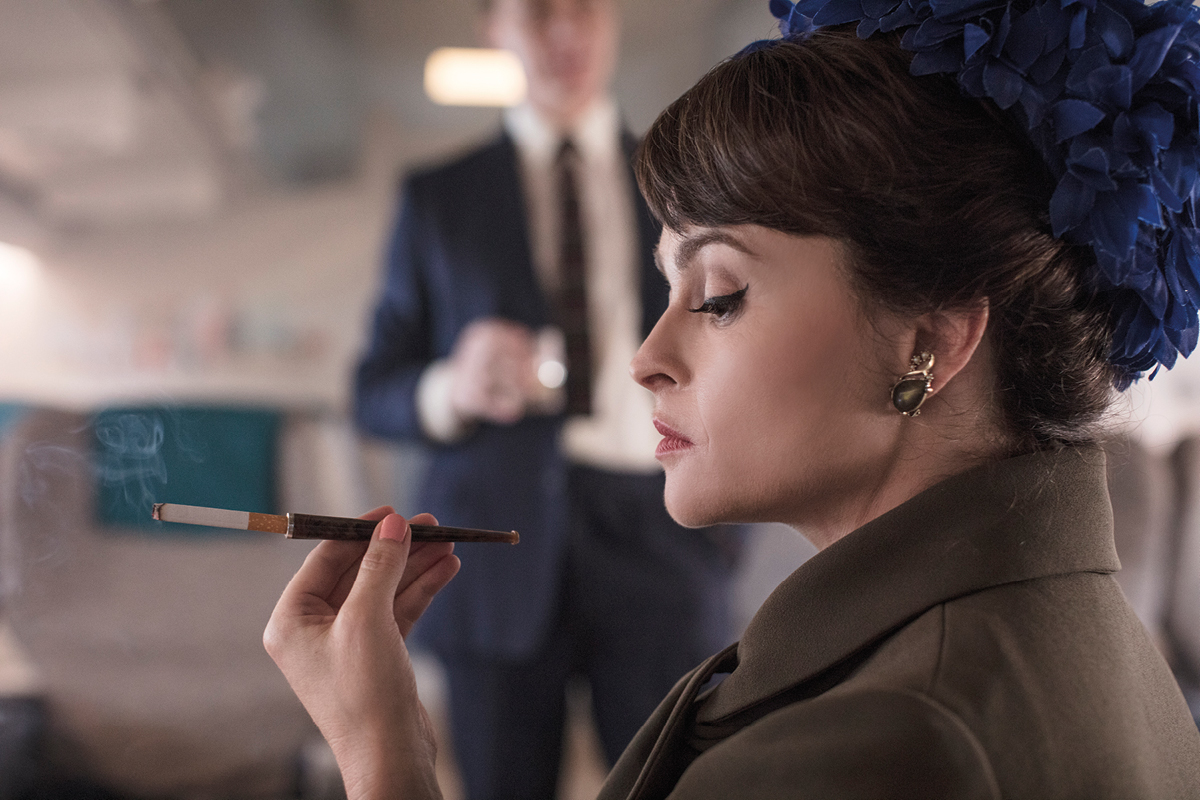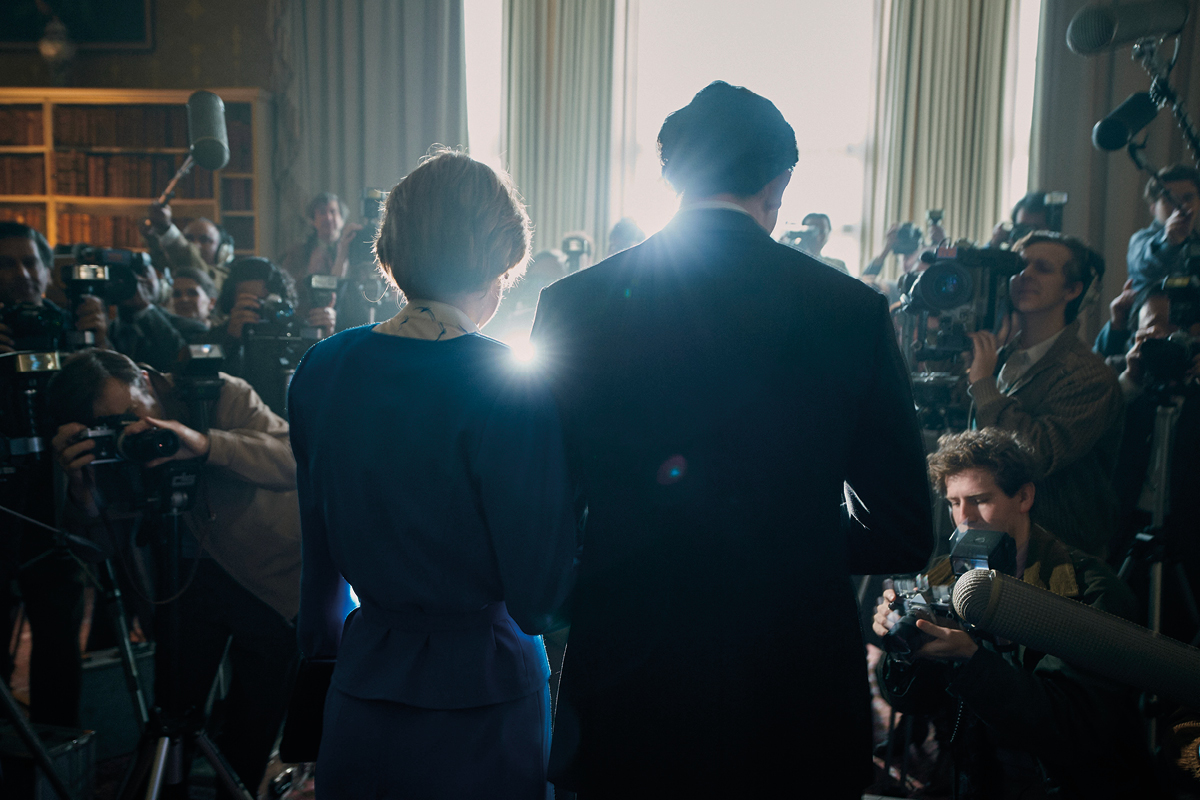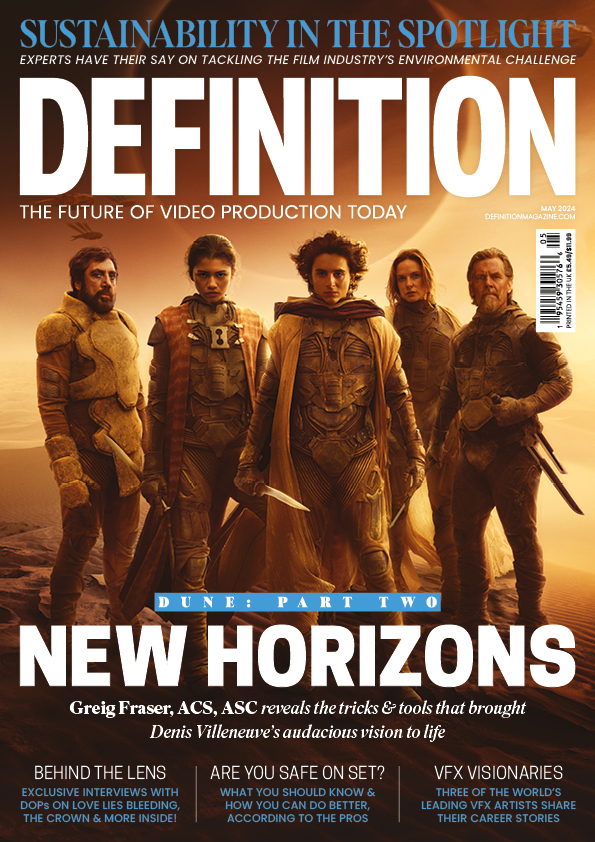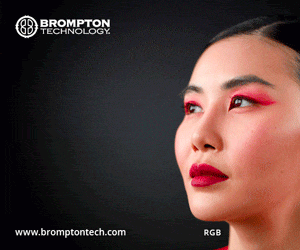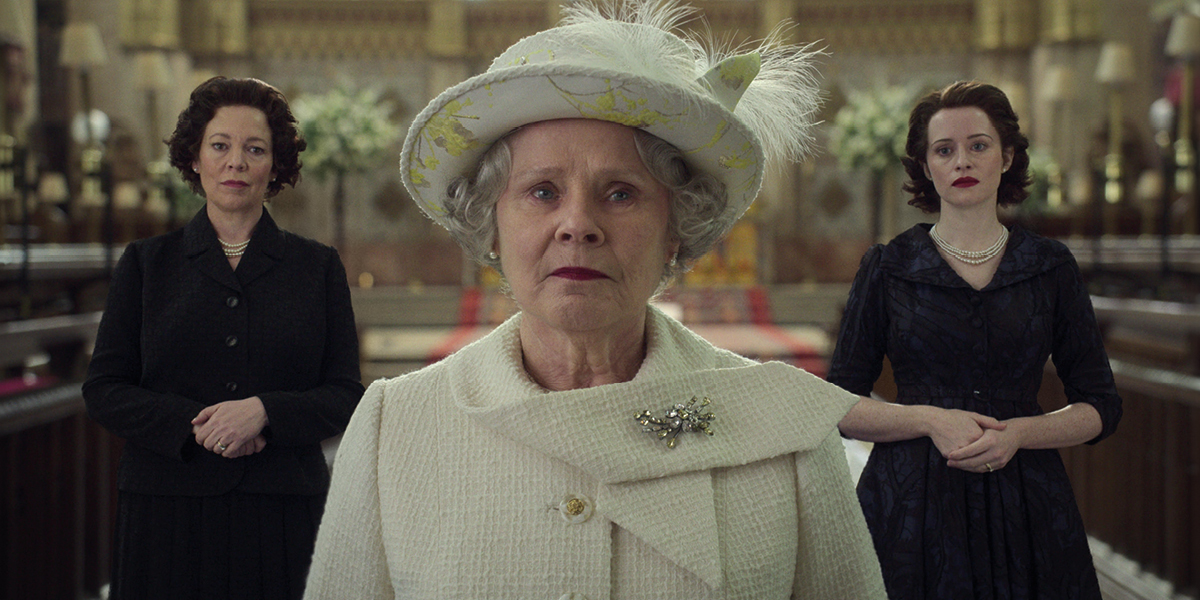
Production: The Crown
Posted on May 13, 2024 by Samara Husbands
Fit for a queen
Centred around Queen Elizabeth II’s 70-year reign, The Crown recently wrapped its six-series run. We speak to DOP Adriano Goldman on both establishing and evolving the look of this hugely successful historical drama
Words Katie Kasperson Images Netflix
Afictionalised retelling of the late Queen Elizabeth II’s life, The Crown spans over half a century.
DOP across all six seasons – including the first and final episodes – Adriano Goldman continuously developed the show’s visual language to mirror the evolution of the British royal family.
The Crown kicks off with Wolferton Splash and the Queen’s wedding to Philip, Duke of Edinburgh – yet Goldman’s work didn’t strictly begin there.
After former collaborator and series co-director Stephen Daldry offered him the job, Goldman began shooting episodes 3 and 5 with Philip Martin. “Although I was going to do the first two episodes with Daldry, he was too involved in a play he was finishing,” explains Goldman. “I had Philip [Martin] marching with me, so we started with episodes 3 and 5 – which included the coronation – and they were huge episodes.”
As The Crown’s original DOP, Goldman faced the daunting task of defining the show’s cinematographic look. “We were concerned about establishing a style without Daldry,” he recounts. “It’s quite static, solid and filmic.” Wanting to leave ample room for the actors’ performances, Goldman decided ‘it should be a slow-paced show’. When reporting back to Daldry, he replied: “I’m watching all the dailies, and I love what you guys are doing. I’m happy to accommodate,” relays Goldman.
Like many long-running series, The Crown sees multiple directors each season. “After shooting four episodes for Season 1, we established a few subtle rules,” describes Goldman, such as generally even pacing and level framing for UK-based scenes. “Every new director that would come aboard would have to follow these basic rules, but there is also some freedom involved. There’s enough room for each director to find their own style and add their own flavour. They experience a lot of consistency, but also plenty of variety.”
Sign of the times
Each season spans roughly a decade, with the series beginning in 1947 and ending in 2005 – a period characterised by stylistic evolution. “There’s a natural visual progression,” states Goldman. “I was always saying that we’re going to see new furniture, new costumes and new cars. We’re also going to shoot in new locations. I don’t think we need to overthink this.”
Every two seasons, the Queen’s character changed hands, with Olivia Colman replacing Claire Foy and Imelda Staunton eventually replacing Colman.
To differentiate these actresses and their narratives visually, Goldman opted for three sets of lenses: the Cooke Panchros for Foy, Zeiss Super Speeds for Colman and Cooke S4s for Staunton. “It gets a little sharper when you move ahead in time,” explains Goldman, mirroring the tech advances of the 20th century.
In later seasons, Goldman utilised zoom lenses to capture Elizabeth Debicki’s Princess Diana, who is often seen from afar in a more ‘observational, voyeuristic’ manner – akin to how she was viewed by the press. “Little by little, the look and pace evolved,” explains Goldman. “For instance, Season 6, episode 3 is the most hectic one because it’s Diana’s last week.”
She and Dodi Fayed (Khalid Abdalla) are in Paris, battling paparazzi for their privacy. The pace quickens as the episode progresses and eventually concludes with the car crash in the Pont de l’Alma tunnel, which occurs off-screen.
One episode prior, Two Photographs parallels Diana’s life with that of her former husband, Prince Charles. A steep departure from the series’ usual stability, it begins by documenting the contrasting lifestyles of photographers Mario Brenna and (fictional) Duncan Muir. “They live in different worlds, in different countries,” describes Goldman.
“[Brenna’s] introduction is way more fun; he drives his convertible car, and the camera is attached to it while vibrating just a little bit. There’s a specific flavour there.” Goldman continues, “Then you cut to a much slower rhythm when you come to Scotland, and you’re building a parallel story between those two characters.” He concludes: “Whenever the script suggests a different approach, you do it.”
The series’ look develops gradually, keeping the viewer immersed and convinced of its fit within that season’s given time frame. “We were never going to shoot Seasons 5 and 6 in the same romantic tone we did Seasons 1 and 2,” comments Goldman. “Between Seasons 4 and 5, I vividly remember Peter saying: ‘The show has to evolve; the look needs to evolve’. It’s less ‘period’ and much more contemporary.”
True or false
Although based on the British royal family, The Crown is a dramatisation of their personal lives as well as the historical, cultural and political events they influenced. For this reason, accuracy was important – though not essential – to the show’s creators.
While Goldman researched the photos and footage of the royals, he was careful not to draw directly from too many existing images. “You feed your brain with references from the period,” he describes. Nevertheless, “There’s a specific shot which finishes Season 6, episode 2 with Diana on the yacht – the jetty. That’s an homage to a famous photo, but something we didn’t want to repeat often. It’s a lovely way to finish the episode, and everybody remembers that iconic picture.
“We never tried to copy anything or mirror actual stock footage; there’s inspiration, but we never wanted to copy,” Goldman continues. “But for that one, I’m very happy we did it. It’s a very moving last shot.”
The Crown’s set-pieces are generally integral to maintaining the show’s true-to-life quality. “For instance,” begins Goldman, “the plane that brings Diana’s coffin back to London – where you see Prince Charles meeting the Prime Minister on the runway – is the same plane they actually used. I don’t know if anyone knows that,” he reveals. Similarly, Prince Charles’ Jaguar is also authentic.
Goldman stresses that while maintaining a degree of accuracy enhances The Crown’s production design, too much can run the risk of it feeling like non-fiction – confusing audiences on what’s true and what’s false. “It’s not a documentary,” he states.
Additionally, while he used vintage lenses, Goldman’s technology wasn’t historically accurate either. “I never try to use period sources,” he shares. “It’s supposed to be filmic, elegant and sophisticated, but it’s still a massive series; you have to shoot quickly and have multiple cameras. We embraced new technology and made use of it in the best way possible.”
Up to the task
The Crown is narratively complex, combining history with familial drama, pitting duty against desire, balancing intimate affairs with international ones.
Goldman recalls the challenges he faced while shooting – namely, managing order on large-scale sets and finding visual solutions to the show’s more existential ideas.
A story of global scale, Goldman recalls filming The Crown in England, South Africa, Spain and Hungary, to name a few. In the latter, the crew managed 1000 extras with only one day to shoot. “There’s no dialogue, so that always makes our lives a little bit easier,” he concedes. Similarly, he was pressed for time while working in York Minster. “Shooting in big spaces is always challenging because you have to be fast,” he reports.
Coming from South America, Goldman also found the subject matter at times foreign, though he brought a unique spin to the series, incorporating elements of magical realism – associated with Latin American art and culture – into an otherwise ‘anti-Cinderella’ story.
This style lent itself to various sequences, from Philip’s flashback in Paterfamilias to Diana’s ghost in Aftermath, and the Queen’s conscience in the series finale Sleep, Dearie Sleep. “There was this idea of getting the Queens back together somehow,” says Goldman. “I think we found a beautiful solution.”
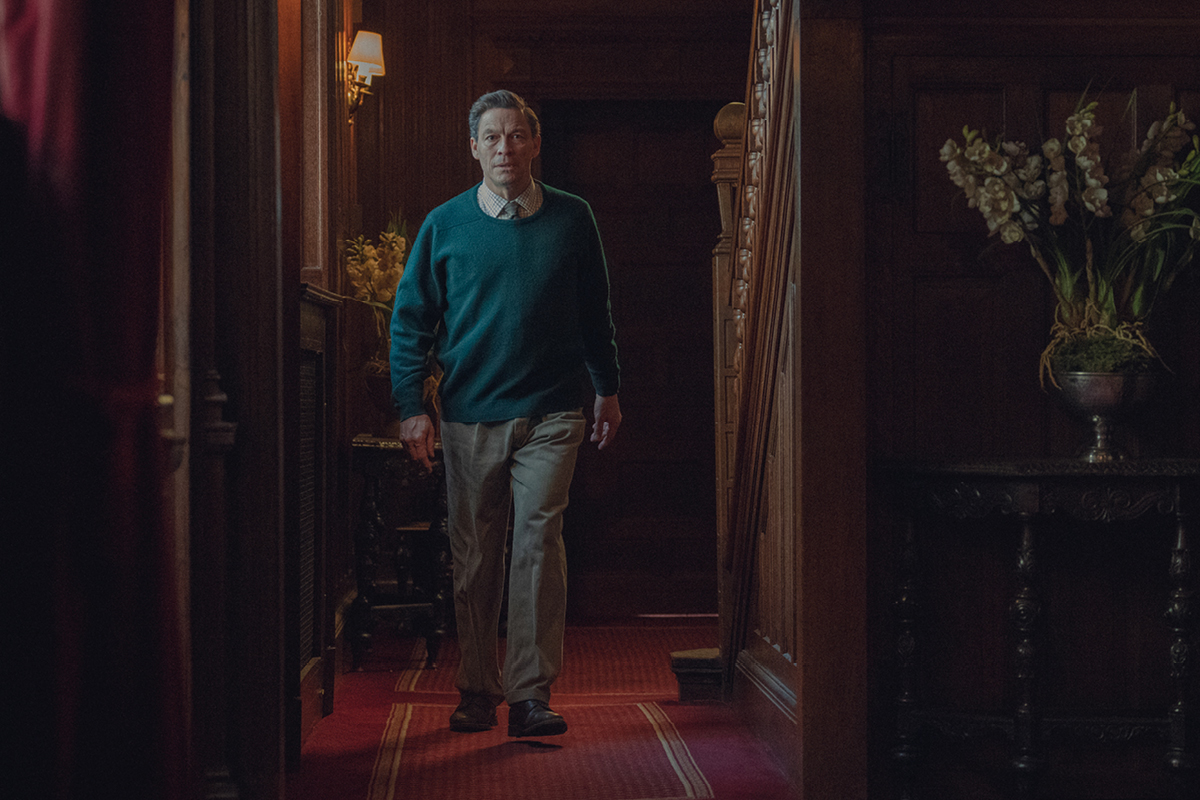
End of the line
Now that The Crown is complete, Goldman reflects on the series with rosy retrospection. “It was the most special project so far in my life – no doubt about it,” he gushes.
“I started in May 2015, and finished in May 2023. I am the only DOP who was present for all six seasons,” Goldman continues. “I had this lead role; as Peter Morgan used to say, I was the ‘keeper of the flame’. I’m proud to say I was there from the very beginning to the very end.”
Goldman and co wrapped The Crown by saving the finale for last. “There was that element of ‘this is goodbye, so we need to make it big and beautiful’,” he recounts, with the episode coming in at a record runtime of 72 minutes. “We finished with 80% of the same crew that we had on Season 1. It was emotional for all of us.”
The Crown fits into a well-established genre – the historical drama, the period piece – though it manages to surmount the stereotypes of being over-reliant on nostalgia or unrealistically positive.
“When you start a show like this, you think, ‘Oh, another royal drama’. We strived to humanise them,” says Goldman. “I give Claire (Foy) most of that credit, because her performance is extremely believable and grounded. It’s not meant to be glossy; it’s supposed to be touchable.” He concludes: “I think we achieved that.”
This interview was first published in the May 2024 issue of Definition.


